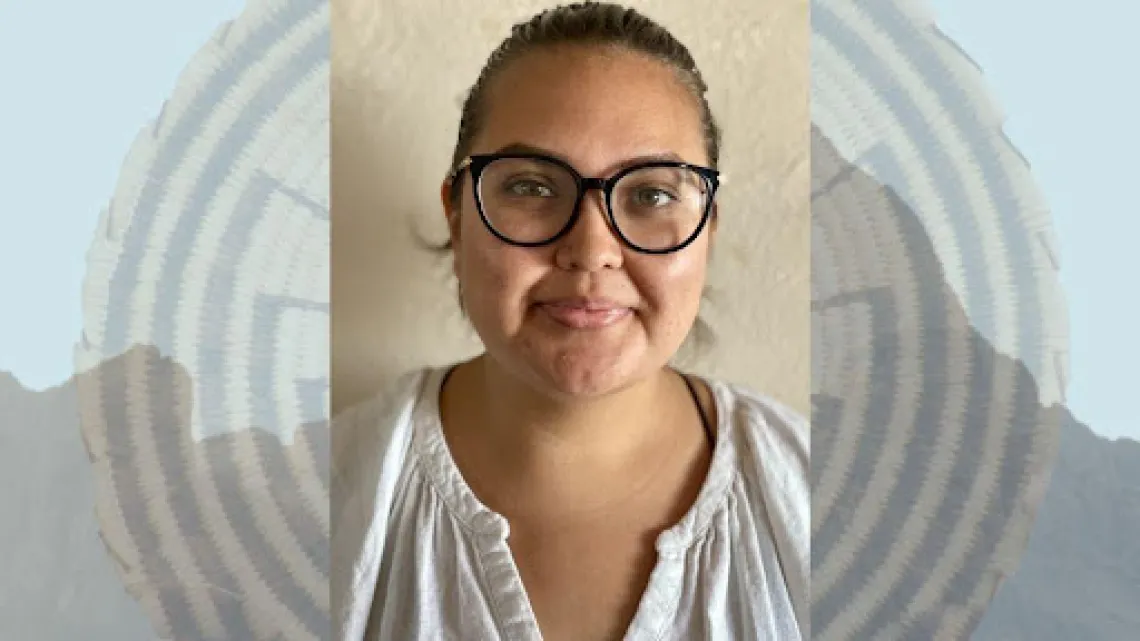Finding Their Way: Native Youth with Disabilities Share Their Voice

Anya Carillo, Native Youth Leader for Finds Their Way
Every person lives at the intersection of identities: age, class, gender, religion, and all the things that play a huge part in how we move through the world. For Anya Carillo, standing at the intersection of Native youth and disability identities is an opportunity to tell her story while helping others find their own voice.
Anya is a member of the Hopi, Laguna, Lakota, and Seneca peoples. She is a Native youth leader for Finds Their Way. Finds Their Way is a University of Arizona Sonoran Center for Excellence in Disabilities program funded by the Administration on Community Living to promote transition and employment for Native youth with disabilities. The program was created to help Native students with disabilities discern what they want to do after high school, with a particular focus on accomplishing employment and other post-secondary outcomes. It is designed to be collaborative and culturally based, giving Native students the opportunity to have their voices heard and respected.
“In the Finds Their Way project, I’m given the opportunity to meet with people and talk about different opportunities that they feel would be important to them — as someone who has a disability and is Native youth,” Anya explained. “Helping Native youth say ‘This is what I want. This is what I want to do. These are the people I want to help support me. This is what we all need,’ is so important to me because anyone’s voice can be lost, and we are giving them the chance to get it back.”
“I think my favorite part [of being a youth leader] is being able to get the shyest kid in the room to say something and have them be excited about giving their response because they’re heard and they’re listened to,” she added. “My favorite part is being able to lead those youth into knowing they have a voice, and they can use it.”
Anya became involved in advocacy through the Arizona Youth Leadership Forum, which gave her the opportunity to share her own experience navigating mental health and disability.
“I was given the opportunity to speak at a conference,” she recounted. “I thought ‘I don’t know about that. I’m probably not the best person to speak about self-advocacy and self-determination at a conference, seeing as I’m barely getting out there myself.’ But I was given that opportunity, and I learned everything I needed to learn about self-advocacy and self-determination, and that’s when I realized I really needed to teach others about self-advocacy. And being someone who didn’t really know anything about this stuff, it really hit me that I’m actually doing the work I need to be able to provide others with the information they need.”
When it comes to addressing the unique intersection of the Native and Disability communities, it is crucial that the conversation considers the Native perspective on disability itself.
Anya recalled an exchange with her grandmother that illustrates how illuminating these conversations can be when different perspectives are shared:
“When I told [my grandmother] I was working with youth with disabilities, she didn’t know what a disability was. She kept asking me ‘What is a disability? I don’t understand what that is. We don’t have disabilities on the rez.’ I said ‘Yes you do. You have disabilities everywhere. Your next-door neighbor might have a disability. You have a disability because you wear glasses, and Papa has a disability because he can’t hear.’ And she said, ‘Well, Anya, everyone is different. It’s a diversity. It's not a disability or anything like that, they just need different ways of helping them be the best person that they can be.”
“In some aspects it’s very hard because on the reservation, there aren’t the different resources and tools that we have for their students,” she continued, “but I love that no one is treated differently just because they’re a little different.”
Understanding the Native perspective on disability is only the beginning of the conversation, however. After, when Native youth with disabilities voice their needs and concerns, they need to be truly listened to and understood. Once real action is taken based on their feedback, a sense of trust is built, and real community can start to form.
“Really, engaging anybody, not just Native youth, is listening to what they need, what they want, and letting them know you’re going to work towards that and help them achieve what they want,” Anya said. “By being able to tell them that and actually follow through, they will be super engaged because they’re going to follow up with you. They’re going to want to learn about the other things you provide because they’re going to think ‘Oh, I can trust this person to do what they told me they’re going to do.’ That’s one thing I really believe: when you say you’re going to do something, keep your word for it. It’s very important that once you ask someone for their opinion, once you ask them for what they need, to find a way to make that happen and hone in to what they need and what they want.”
Anya and the Finds Their Way program are doing their best to put this into practice every day. “When I got asked to do the Finds Their Way project, I agreed immediately, because being a Native youth and being able to give my input on important decisions they’re going to make, and leading and helping with ideas is very cool to me,” she said. “That’s something I really like about Finds Their Way - giving me the opportunity to give other people the opportunity to use their voice.”
